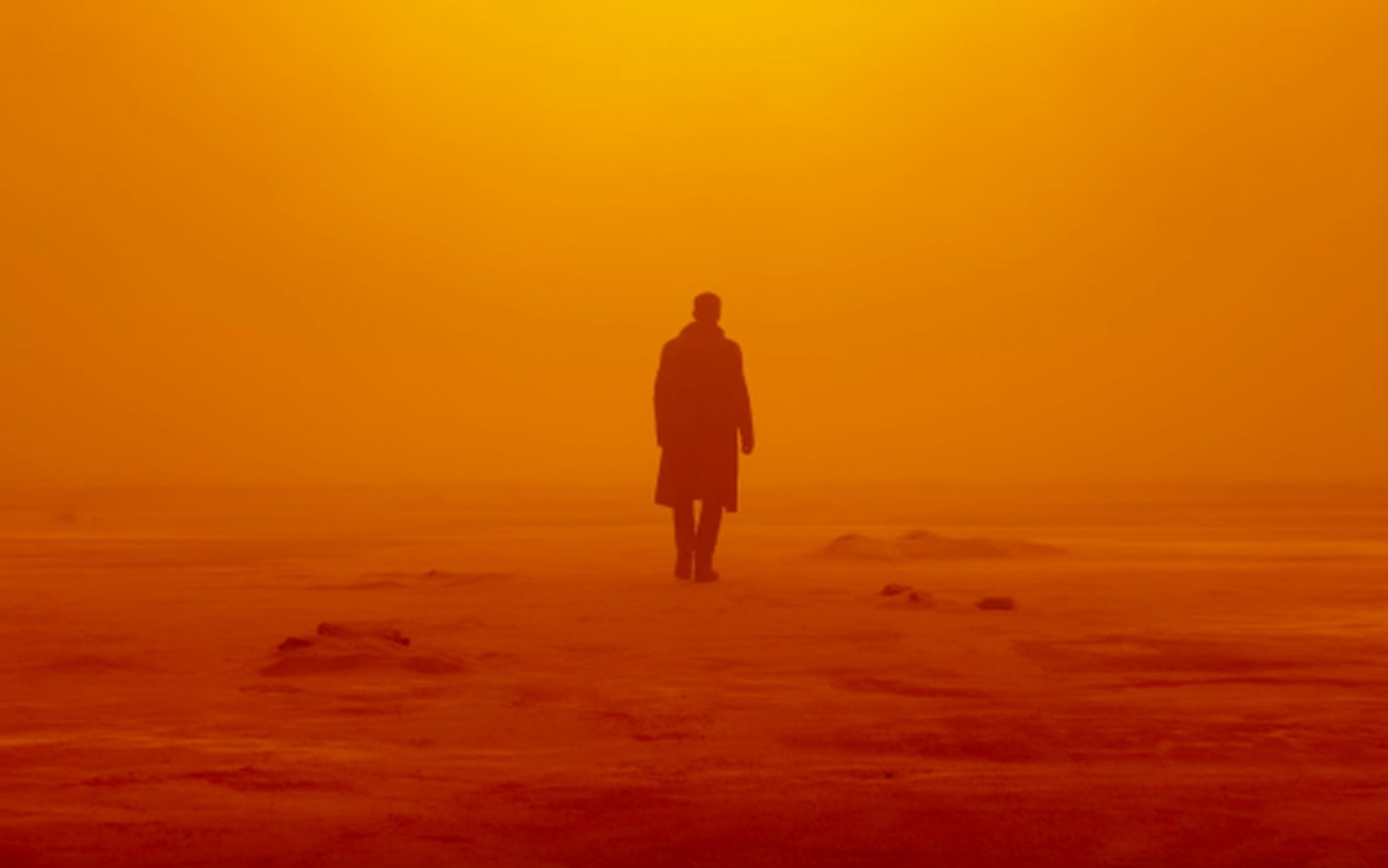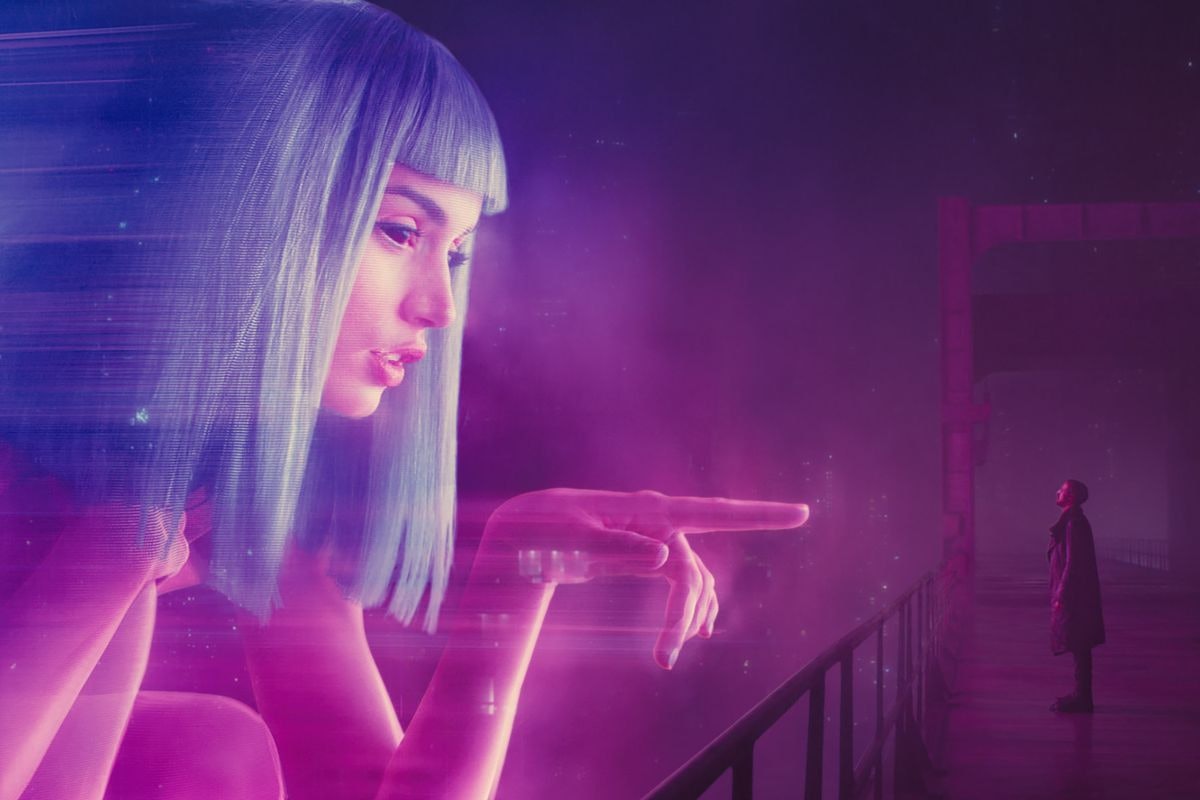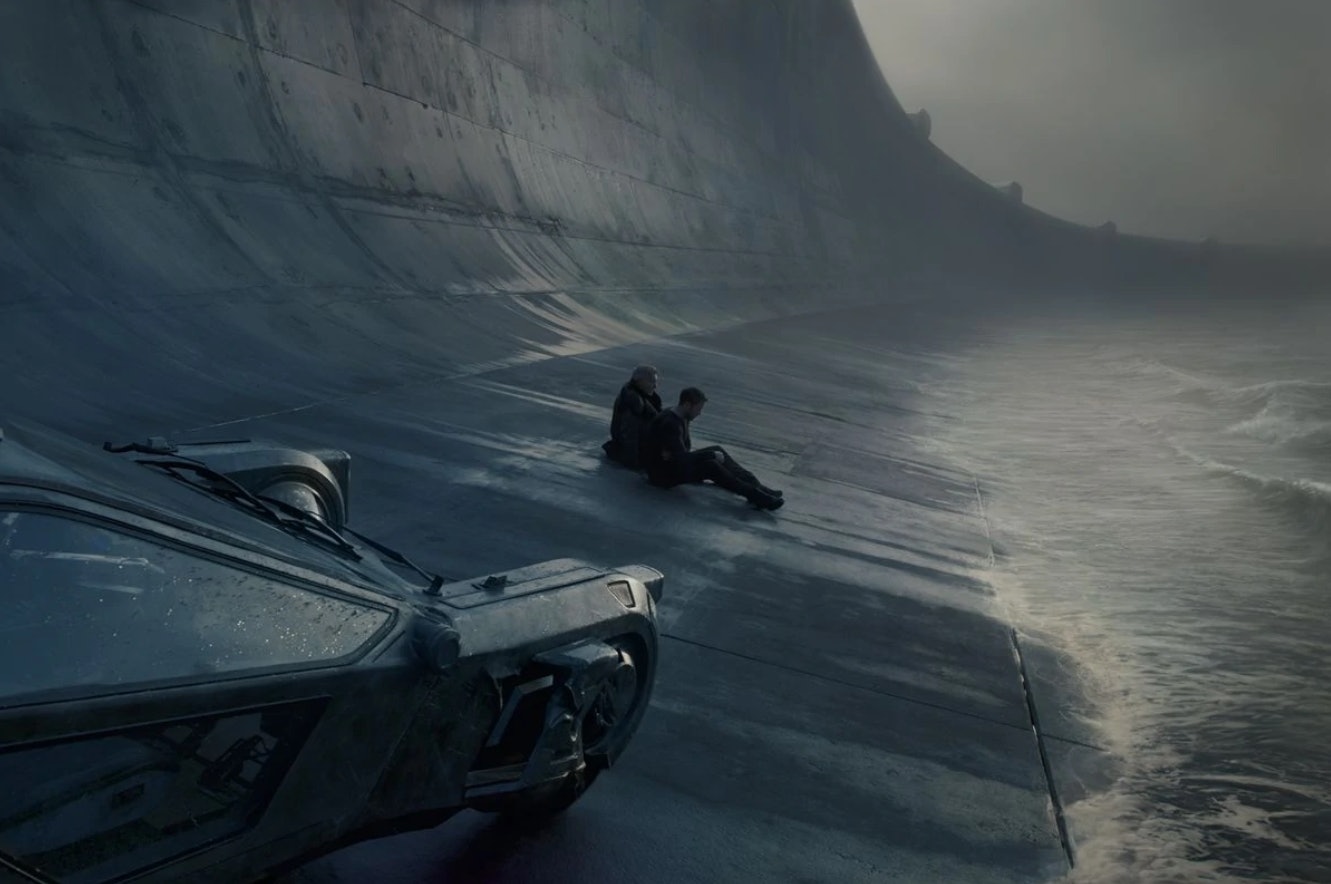
At the dawn of the 1980s, the architects of the budding artistic movement that would become cyberpunk had no idea they were doing the work of modern oracles. John Brunner’s The Shockwave Rider, Katsuhiro Otomo’s Akira, and William Gibson’s Neuromancer all consolidated the aesthetics of hacker culture with the sensibilities of the punk rock movement, predicting social trends and scientific advancements in the process. The genre owes a debt to countless pioneers and ancestors, but there is arguably no singular piece of cyberpunk fiction more recognizable than Ridley Scott’s Blade Runner.
Even though cyberpunk frequently uses the circumstances of the now to imagine the future, there’s an uncertainty about how the original Blade Runner frames its narrative. The strength of its worldbuilding is in how speculative it is; audiences in 1982 were unsure of the future for a myriad of reasons, and Blade Runner’s bleak, techno-urban decay isn’t quite apocalyptic as much as it teeters on a precipice. It’s a movie filled with questions and potentiality. Is Deckard human or machine? Will Rachael live or die? Can our world be improved, or is it too late?
The film doesn’t provide many concrete answers, but time does. If Ridley Scott wondered where we were headed 35 years ago, then Denis Villeneuve’s breathtaking sequel roots itself firmly in the now to show where we ended up.
Taking place 30 years after the original, Blade Runner 2049 follows a new model of replicant named K (Ryan Gosling) as he unravels the strands of a conspiracy that involves former blade runner Rick Deckard (Harrison Ford) and threatens to destroy the status quo between humans and replicants.
While the plot unfolds in 2049, it felt like a lot of the terrifying dystopian potential of the first film had come true by the release year of 2017. 2049 marks the third collaboration between Villeneuve and Roger Deakins, and unlike the shadowy and soft texture of the original film, its cinematography is defined by impeccably clean and maximalist visuals. Not only is the movie one of the most gorgeous releases of the decade, but its aesthetic serves a larger purpose. 2049’s vision of the future is draped in excess and vanity to beautify the world’s Brutalist desolation.
Many of the existential crises portrayed in Blade Runner 2049 are issues humanity is living with now. Despite not being the focus on the narrative, the film’s production design reflects the volatility of climate change. Dramatic sea level changes have sunk large chunks of Los Angeles, and the permanent cloud of toxic dust coating Las Vegas was inspired by 2009 Australian dust storms. The aesthetics of the original Blade Runner appear influenced by early climate change projections, but decades later the effects are prominent in ways unforeseen in 1982.
The modernism of 2049’s future also leaks out of every bit of the script. Blade Runner has always been about the mechanization of the human experience, and the technological advancements of its sequel feel less prescient and more reflective. A particularly startling example is Ana de Armas’ understated role as Joi, a holographic artificial intelligence and K’s romantic partner. Not only does her artificiality, idealistic design, and intangible presence evoke the euphoric inhumanity of pursuing the perfect digital stranger on dating apps, but the concept of robotic sex workers is a much more tangible reality now than in 1982.

A major part of Blade Runner 2049’s conflict is the chafing of revolutionary new technologies and ideas with crumbling, pre-existing structures; the push and pull between stagnation and rebellion. For generations, replicants have been created to serve as a laboring underclass, be it in sex work, mining, or even personal servitude. They’ve always been meant to lack full autonomy, but 2049’s narrative is kickstarted by the discovery that Rachael, Deckard’s replicant lover from the first film, somehow delivered a child.
Both the LAPD and the CEO of the Wallace Corporation, Niander Wallace (Jared Leto), have a vested interest in finding the child. The police want it eliminated to preserve the illusion of replicant subservience, and Wallace wants to capitalize on the potential of replicant biological reproduction to expand interstellar colonization. While the goals are different, they both represent a corrupt status quo, a desire to trample a permanent underclass in favor of greed and self-interest.

When we first meet K, he’s a replicant “retiring” rogue replicants on behalf of the LAPD, and it isn’t until he’s ordered to find Rachael’s child that he starts to question his complicity in the system. His decision is first driven by his belief that he might be Deckard’s child, but when he learns otherwise his motivations become less self-motivated. When he puts the collective in front of his individual story he allows Deckard to reconnect with his child, potentially ensuring the future of replicants as a species.
2049’s deterministic reflections of our reality aren’t all bleak and hopeless. Just like in the film, we’ve recently seen organizations rise up to combat the injustices of a corrupt system and a failing status quo, from Black protestors challenging the failings of the police to pro-choice protestors affirming their reproductive rights. The forces that have helped drive Earth to the brink of catastrophe might seem insurmountable, but it helps to remember the power of collective action.
Blade Runner 2049 spends a lot of time toiling away in the cynicism of our imminent present, but it’s important that Villeneuve chose to end the movie with an act of selflessness reflecting the potential for change. Just like the darker elements in the film, hope isn’t a virtue from 30 years into a cyberpunk wasteland. It lives and breathes right now.
Blade Runner 2049 is streaming on HBO Max.







